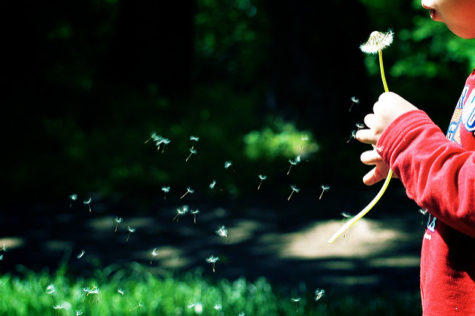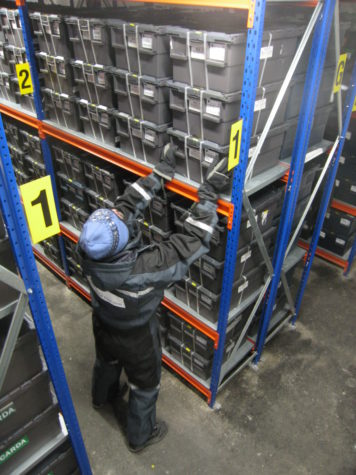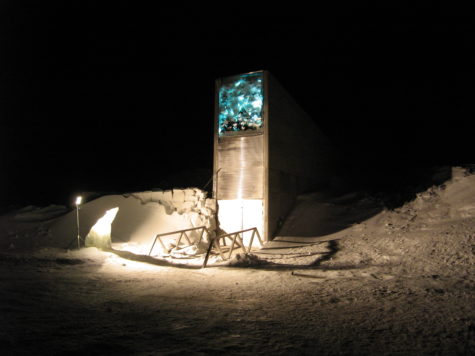 This is a travel story about a place I’ve never been. Maybe it’s a strange destination—a single, cold room. It’s thousands of miles from where I am, though, which makes it seem fascinating based on distance alone. But even better: inside it, you’d find pieces of the whole world. More than 500 million tiny pieces. Seeds.
This is a travel story about a place I’ve never been. Maybe it’s a strange destination—a single, cold room. It’s thousands of miles from where I am, though, which makes it seem fascinating based on distance alone. But even better: inside it, you’d find pieces of the whole world. More than 500 million tiny pieces. Seeds.
There are seeds of all kinds: eggplants from South America, the maize from Italy used to make the best polenta you’ve ever had. Melon from Taiwan, luffa from Burundi. Quinoa and barley and millet and rye. There are even seeds from wheat and barley collected on the Heard and McDonald Islands, which are very close to Antarctica, and very, very far away from where we are, in this room, deep in a mountain on an island 800 miles from the North Pole.
This is where we’ve traveled: the Svalbard Global Seed Vault. It opened in 2008 in Svalbard, a Norwegian archipelago well above the Arctic Circle. The seed bank aims to protect the diversity of the world’s food crops, storing seeds from species from around the world and safeguarding them against anything the world can throw at them, from simple accident to global catastrophe.
We’d be safe here, in other words. Outside, the sea level could rise, blizzards rage, bombs burst through the air—but nothing would touch us, inside Platåberget, “plateau mountain”. Someone would need to go through five sets of doors with coded locks to get into the vault with us. It would be hard to get here in the first place, surrounded by the Arctic Ocean. Also, there are the polar bears.
But there’s something else comforting, too. I’m imagining a sense of security comes from being among all this potential. Coax these seeds to sprout, tinker with the water and sun and soil and nutrients, and the world is ours, our very own garden of Eden. (Except with polar bears, not snakes.)
We’ll need to wear long johns, warm layers, a snowsuit—it’s -18ºC in here. But that’s fine. I don’t mind wearing a snowsuit, and you probably don’t either. Maybe it will even make us feel cozy, like grown-up sized eggs in polypropelene nests, even if we do have to take it all off to go to the bathroom. Wait: I’m not sure there’s a bathroom in here. This is the trouble with taking you somewhere I haven’t been.
 To get out of here, we’ll go the opposite way that the seeds come in. We’ll leave this vault and its dormant cornucopia, hidden away in sealed bags inside sealed boxes. Rack after rack of boxes. They come in on hand trolleys, painted a cheerful yellow. Maybe we can ride one of these back out. You get on and I’ll push. Let’s pretend it’s a supermarket cart, and it’s late at night and the only people shopping are drunk or lonely or or out in the middle of the Arctic Ocean on an island inside a mountain. Wait, that’s us.
To get out of here, we’ll go the opposite way that the seeds come in. We’ll leave this vault and its dormant cornucopia, hidden away in sealed bags inside sealed boxes. Rack after rack of boxes. They come in on hand trolleys, painted a cheerful yellow. Maybe we can ride one of these back out. You get on and I’ll push. Let’s pretend it’s a supermarket cart, and it’s late at night and the only people shopping are drunk or lonely or or out in the middle of the Arctic Ocean on an island inside a mountain. Wait, that’s us.
From the vault, we’ll come out into the main chamber. The seeds get labeled here, on their way in. There are two other doors here—behind each is another empty vault, ready for more seeds. There’s a sculpture, too, of a grain of wild rice. I’m going to start pushing faster, I really have to pee. We’ll roll up the 100-meter tunnel toward the entrance, security cameras chronicling us as we pass. Let’s make faces. Let’s wave. Let’s—oh, no, it’s still too cold to unzip our snowsuits.
Maybe they wonder what we’re doing, going this way. Only a few sets of seeds stored inside have made this return journey. In 2015, researchers from the International Center for Agricultural Research in Dry Areas, which had been based in the Syrian city of Aleppo, requested more than a third of the 325 boxes of samples that they had deposited several years before. The seeds would augment those in a collection that had been damaged in the civil war.
It’s less important that we leave, I guess, but it feels pretty urgent. We’ll burst out of the entrance and start hightailing it to the nearest town, Longyearbyen. There’s a bathroom at the airport. Do you have the rifle and the flare gun? We’ll need them until we get someplace more populated; there are more polar bears here than people.
Oh, there are so many things I want to show you after that. We can go snowmobiling, we can go dogsledding. Then there’s a four-course menu with wine pairings at Gruvelageret, up on the hillside beneath the Longyear Glacier, the polar bear-shaped chocolate at the Freune Kaffe.
But wait—let’s look back at where we came, just for a moment. The entrance to the vault that holds all those seeds reaches out of the mountain behind us, the bowsprit of an immense ocean liner. A light installation covers the roof and entrance wall. In summer, the all-night sun sparkles off the prisms and mirrors. Now, in winter, fiber-optic cables give it a green glow in the day-long night. The light looks almost tropical, as if we’re peering into the sea at the far side of the world.
You know, I think I can hold it. What do you want to do next? Longyearbyen is calling, and the world beyond, all the places that can hold us, where the air is warmer and the night is shorter and no permafrost will stop our roots. But then there is the emerald glow behind us, this quiet place that is all potential. Whatever you decide, watch out for the bears.
**
Top image by Nico Tranquilli via Flickr/Creative Commons
Svalbard Global Seed Vault photos by Dag Terje Filip Endresen/NordGen
Great post! I was reminded of a short video tour of the seed vault from Derek at Veritasium.
https://www.youtube.com/watch?v=2_OEsf-1qgY
Thank you, Jackie, I hadn’t seen that! I think I’m still out of luck on the bathroom.